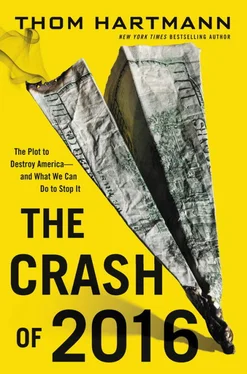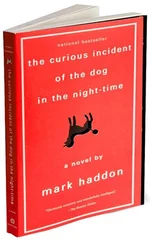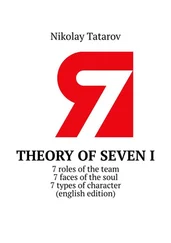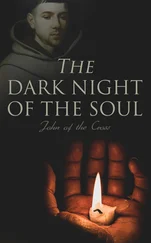But today that middle class, like the canvas Moon, has been hollowed out. The middle-class neighborhoods still exist across America, but they’re teetering on stilts of mortgage and credit card debt.
As then Labor Secretary Robert Reich testified before Congress in 1994, “[T]he net national savings rate, which was at a relatively robust 8.2 percent of GDP during the 1970s, has dropped to a barely visible 1.8 percent as of the early 1990s.” 1
That was just a decade and a half into the Reagan Revolution. Today it’s far worse. The AP headline from February 11, 2009, says it all: “Americans Have Negative Savings Rate.” 2
Hollowed out, too, is our nation’s democracy. The spectacle of national elections confronts us every other year, but behind the pomp and circumstance our democracy has corroded into an oligarchy, as billionaires finance their own political candidates and corporate-funded think tanks do the work once reserved for elected representatives of writing and passing legislation.
Stripped clean and hollowed out, the United States is more vulnerable today than it’s ever been—including during the Great Depression and Civil War. Those fortified pillars that supported a booming middle class are stolen, and without them America teeters on the verge of the next Great Crash.
Ultimately, this is a story of how America was dragged into the Crash of 2016.
We are standing today at the edge of the Fourth Great Crash and war in American history. The previous three—each about eighty years apart—were gut-wrenching in their horror and bloodshed, but they ultimately transformed America in ways that made this a greater and more egalitarian nation.
Thomas Jefferson predicted them, as he had lived through one here and observed another sputter and fail in France. Periodic revolutions were necessary for America—or any democratic society—to flourish and grow, he said. And if they were stalled or blocked, then the ensuing crisis would be all the more intense.
Jefferson said it best: “If this avenue [of periodic revolution] be shut to the call of sufferance, it will make itself heard through that of force, and we shall go on, as other nations are doing, in the endless cycle of oppression, rebellion, reformation; and oppression, rebellion, reformation, again; and so on forever.” 3
That cycle, spanning a few generations each time, has indeed been repeated over and over again in America. And right now we’re in the midst of it being repeated again.
Numerous anthropologists, historians, and analysts have written about the generational cycles of revolution and crisis, most notably William Strauss and Neil Howe in their brilliant book The Fourth Turning , which extensively documents the previous crises, from the American Revolution, to the Civil War, to the Great Depression.
But this book is different. While we provide an overview of history, this book focuses specifically on the crisis that is enveloping us today and will soon overwhelm us—and then, ultimately (over the next decade), fundamentally transform our nation.
We stand today at the edge of the Fourth Great Crash (and Reformation) since Jefferson sparked the First American Crisis by putting quill to paper and drafting the Declaration of Independence in 1776.
In the coming pages, you will meet the actors who set in motion today’s cataclysmic chain of events: the architects, the conspirators, and the propagandists who have both shaped the twenty-first-century crisis and are trying so hard to exploit it for their own gain. And you will see how our past may well carry answers to rebuilding our future out of the current crisis.
This crash will unfold in its own unique fashion, different from the three America has previously experienced but also eerily similar.
From the shock of another economic meltdown, to the horror of war, to the dangers of an environmental crisis combined with radical social transformation, and the gridlock of dysfunctional government, the Fourth Crash—the Crash of 2016—is today’s moment of truth for America.
For some Americans, the crash is already well under way.
In February 2010, we got a glimpse of the sort of inequality-induced violence that may accompany the Crash of 2016 when Joe Stack woke up in his cozy middle-class neighborhood, set his home on fire, and then drove to the local airport just outside Austin, Texas.
He hopped into his single-engine Piper Dakota airplane, took off from Georgetown Municipal Airport, and minutes later, like a missile, dove his plane right into a glassed-facade office building that housed a local IRS tax collection office, instantly killing himself and an IRS agent and former Vietnam veteran, Vernon Hunter, who was working at his desk in the building.
When the American economy first went into meltdown a few years earlier, it was people like Joe Stack who were hit the hardest. He was a software engineer who watched his clients and income dry up, yet he didn’t get a bailout the way Wall Street did. His bills piled up, he sank into debt, and the taxman was knocking down the door. Uncle Sam needed to bail out hundred-billion-dollar transnational corporations—many of which, coincidentally, paid no American corporate income taxes.
Joe appeared calm on the surface, a regular guy who lived in a run-of-the-mill middle-class home at Dapplegrey Lane in North Austin. He played guitar in a local band.
But there were clues: He named his band Last Straw and his only album was titled Over the Edge . 4And what seemed like inconspicuous songs were anything but. There was a quiet desperation consuming Joe Stack, and he was nearing a breaking point.
Eventually he hit it. That’s when he resorted to becoming our nation’s first modern suicide bomber.
It would be easy, and convenient, to write Joe Stack off as a deranged man who, faced with financial troubles, resorted to a desperate act of violence. But he was far from that.
“[Joe] seemed like one of us ducks floating down the river,” Stack’s brother said. “We just didn’t realize he was paddling so furiously under the water.” 5
Eventually Joe Stack got tired of paddling.
In his suicide letter, Stack highlighted the very real problems in Royalist America.
“I remember reading about the stock market crash before the ‘great’ depression and how there were wealthy bankers and businessmen jumping out of windows when they realized they screwed up and lost everything,” Stack wrote. 6
“Isn’t it ironic how far we’ve come in 60 years in this country that they now know how to fix that little economic problem,” he added, “they just steal from the middle class… to cover their asses and it’s ‘business-as-usual.’”
Taking on the Royalist corruption of government, Stack wrote, “Why is it that a handful of thugs and plunderers can commit unthinkable atrocities… and when it’s time for their gravy train to crash under the weight of their gluttony and overwhelming stupidity, the force of the full federal government has no difficulty coming to their aid within days if not hours?”
He went on, “Yet at the same time, the joke we call the American medical system, including the drug and insurance companies, are murdering tens of thousands of people a year… and this country’s leaders don’t see this as important as bailing out a few of their vile, rich cronies?”
Recognizing the cancer in our nation, he even went after the idea of capitalism itself, writing, “The communist creed: From each according to his ability, to each according to his need. The capitalist creed: From each according to his gullibility, to each according to his greed.”
Thanks to this diseased Economic Royalist rule, there are millions of Americans just like Joe Stack who are confronting difficulties—people who are one foreclosure, or one layoff, or one denial of a medical procedure away from reaching their breaking point.
Читать дальше












